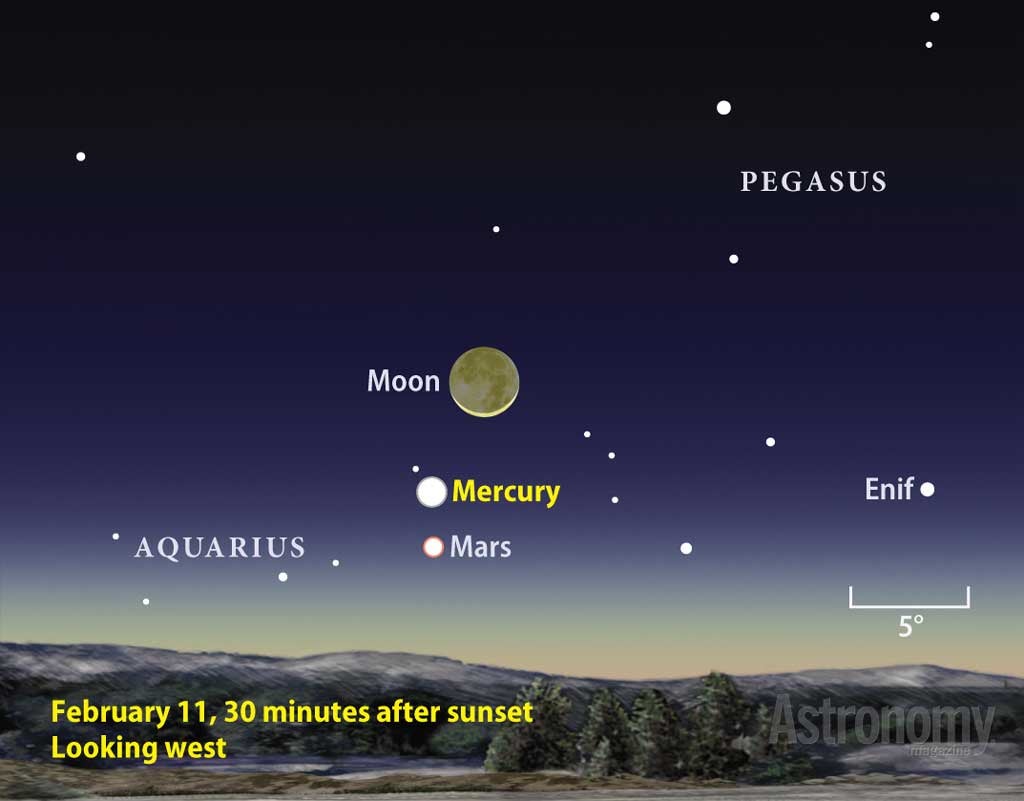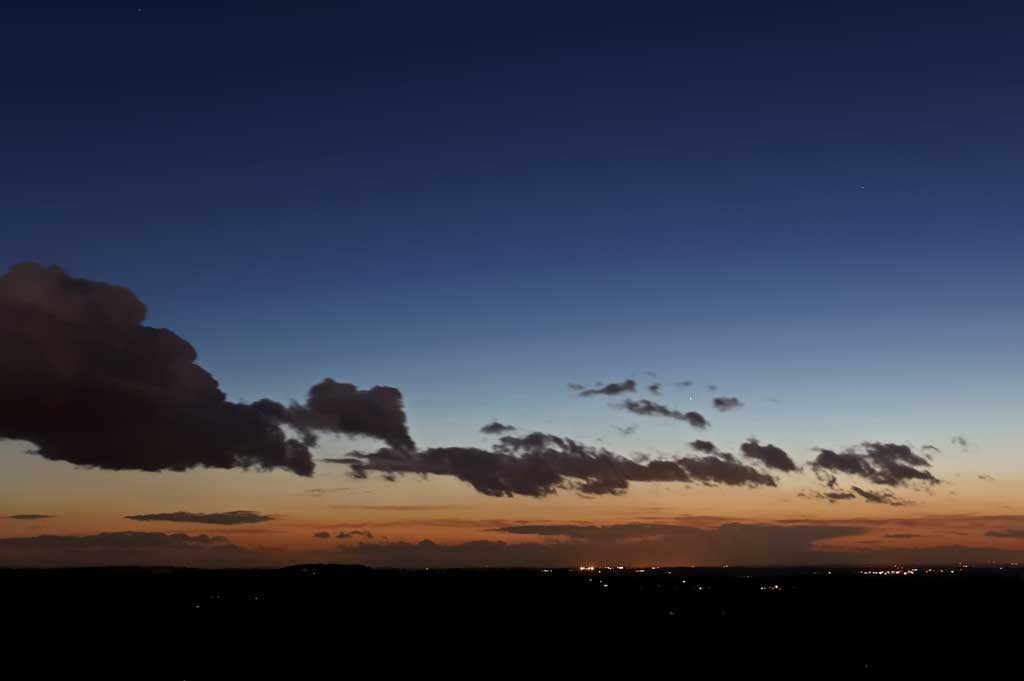Mercury’s close proximity to the Sun usually makes the planet difficult to spot because our star’s glare washes out the point of light marking the innermost planet. In addition, Mercury never gets far enough from the Sun to appear high in a dark sky. But in mid-February at dusk, look about 18° east of the Sun to find this elusive planet. (The width of your fist held at arm’s length equals approximately 10°.) February 16 marks the best time in 2013 to see Mercury in the evening sky. On that day, it reaches greatest elongation, meaning the innermost planet attains its greatest angle away from the Sun as seen from Earth.
“Look for Mercury 11° high in the west-southwest 30 minutes after sundown,” says Senior Editor Michael E. Bakich. “Mercury glows at magnitude –0.6, which makes it the brightest object in the area.” At greatest elongation, Mercury’s disk spans 7″ across and appears half-lit.
The inner planet makes a good target a few times in the month. On February 8, Mercury stands just 0.3° north of Mars — the inner planet shines at –1.0 that night while the Red Planet glows at magnitude 1.2. (You’ll need binoculars to spot Mars during twilight.) Three days later, Mercury and Mars stay close as a slim crescent Moon passes just 5° north of Mercury on February 11.
Fast facts about Mercury
- Mercury orbits the Sun at an average distance of 36 million miles (58 million kilometers), but covers a broad range from 29 million miles to 44 million miles (47 million km to 71 million km).
- Mercury takes just 88 days to complete one orbit of the Sun.
- Mercury takes 59 days to rotate once on its axis.
- With a diameter of 3,032 miles (4,880 km, or 38 percent of Earth’s), Mercury is the smallest planet in the solar system.
- Humans got their first close-up look at Mercury in March 1974 when NASA’s Mariner 10 spacecraft flew by and revealed a heavily cratered surface.
- NASA’s MESSENGER spacecraft entered orbit around the innermost planet March 18, 2011, and has since discovered strong evidence that water ice exists within permanently shadowed craters at Mercury’s poles.
Expand your knowledge with these tools from Astronomy magazine
- Video: Tour the solar system: Mercury, with Liz Kruesi, associate editor
- StarDome: Locate Mercury in your night sky with our interactive star chart.
- The Sky this Week: Get your Mercury info from a daily digest of celestial events coming soon to a sky near you.
- Sign up for our free weekly e-mail newsletter.












